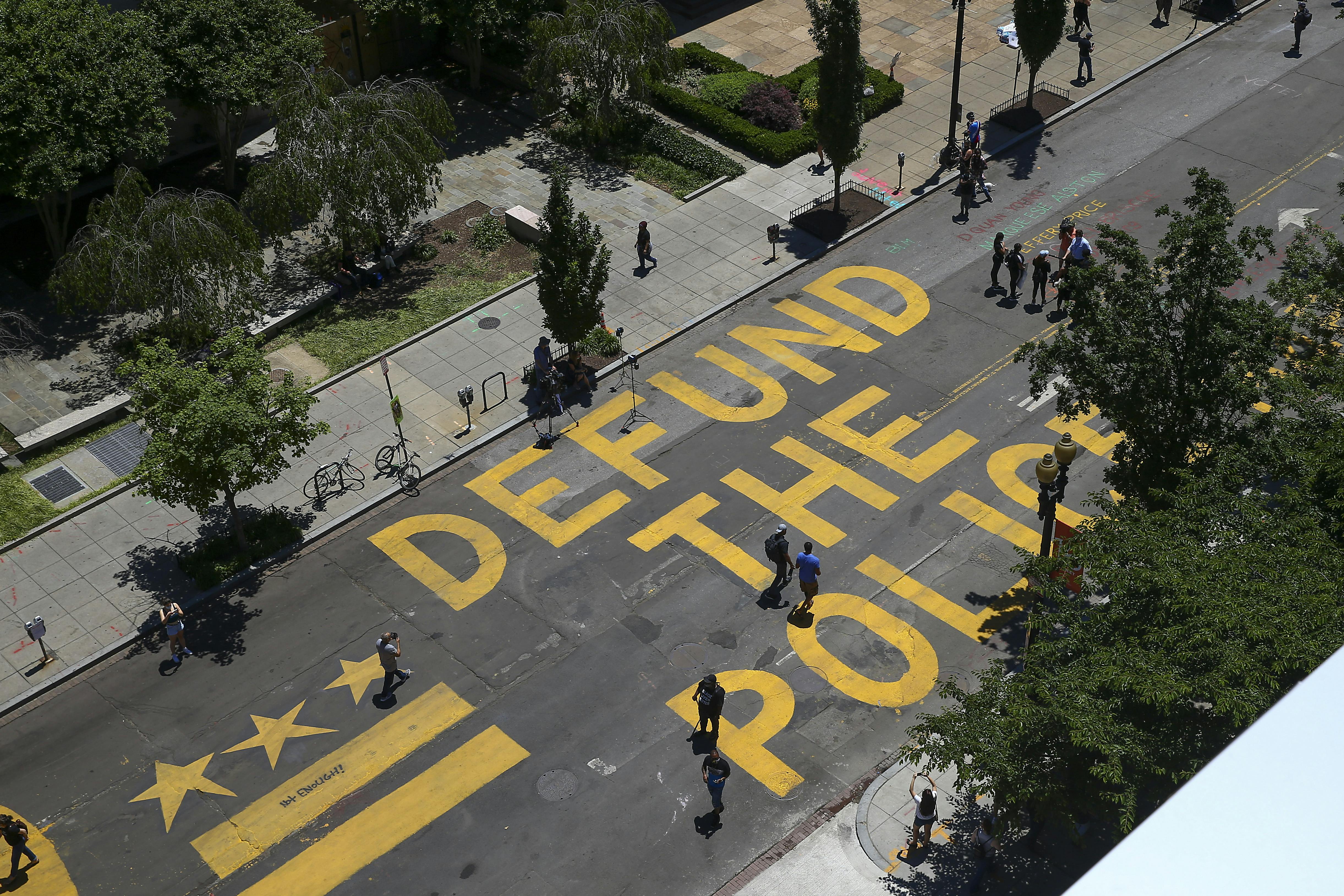
When Yasiin Bey (formerly Mos Def) released his song, "Mathematics," from his debut album, Black on Both Sides, listeners were given a pre-Y2K statistical state of the union as it related to a number of important societal issues.
From gentrification to mass incarceration, and the rise of technology, to the pay disparity between the haves and have-nots, the DJ Premier-produced song — featuring glitch-like guitar stabs — is a meditation on where we were, and hopefully, a path forward.
It's interesting to examine "Mathematics" 25 years after the song was released. In some instances, Bey's examination of culture remains shockingly accurate — suggesting an eery sameness in how nothing really changes — while there is also a glimmer of hope in figures that suggest we've evolved for the better.
Ten years after the making of Black on Both Sides, he seemed just as concerned with America's problems as he was when he first made his album.
"America should deal with cleaning up its own house, and stop fucking with people, and stop pursuing its international interests with such disregard for how these people live, their cultural ties," he told Spin.
During the 20th anniversary of the celebration of Black on Both Sides, Bey sat down with Ari Melber, remarking of the contents of the album, "Definitely was commenting and remarking on the world I saw around me, from a fairly unique, sharp perspective growing up in New York City,” he said. “I had access to a lot of powerful vibrations and some stark realities as well. A very singular type of experience, to say the least.”
The claim: Nearly half of America's largest cities is one-quarter black
As estimated by the United States Census Bureau as of 2022, the following cities are considered the largest in the nation: New York City, Los Angeles, Chicago, Houston, Phoenix, Philadelphia, San Antonio, San Diego, Dallas, and Austin. When added together, they account for 23,162,903 people.
As of 2022:
New York City is 23 percent Black
Los Angeles is 9 percent Black
Chicago is 28.8 percent Black.
Houston is 22.4 percent Black
Phoenix is 7.4 percent Black
Philadelphia is 43 percent Black
San Antonio is 6.6 percent Black
San Diego is 5.9 percent Black
Dallas is 13.6 percent Black
Austin is 7.9 percent Black
According to census date, only two cities — Chicago and Philadelphia — reach at least the 25 percent threshold. Economists Alex Bartik and Evan Mast noted in a 2022 paper that over the past 50 years, the share of the Black population living in the 40 most populous central cities in the U.S. fell from 40 percent to 24 percent.
The claim: 40% of Americans own a cell phone
According to Consumer Affairs, 92 percent of Americans now own a cell phone – with the iPhone controlling 55 percentage of the marketshare. Data suggests that Americans check their phones an average of 144 times a day, and spend an average of four hours and 25 minutes immersed in their screens.
The claim: The average minimum wage is $5.15
The federal minimum wage for covered nonexempt employees is $7.25 per hour. The $2.10 increase from 1999 to 2024 represents a 40 percent increase. By contrast, Germany has seen their minimum wage increase from €8.50 ($9.19) to €12.41 ($13.42) between 2015-2024.
The U.S. is one of a handful of countries where the legislature has primary responsibility for setting minimum wages. Only 17 countries (about 10% of those with minimum-wage systems) set their rates by statute. Furthermore, at least 80 countries where minimum wages are set either by or pursuant to national law have an explicit requirement to revisit them every so often – in most cases annually or once every two years.
The claim: Join the other five million under state supervision
Nationwide, nearly 3.7 million people—or 1 in 69 adults—were on probation or parole in the U.S. at the end of 2021.
2007 marked the height of Americans under probation, or parole, with a total of 4,293,000 under state supervision.
The claim: Only 15 percent of profits, ever see my pockets
According to ASCAP, under the traditional recording agreement, recording artist royalties usually range from 10 percent to 25 percent of the suggested retail price for top-line album. In the United States, the royalties are based on a "statutory rate" set by the U.S. Congress. This rate is increased to follow changes in the economy, usually based on the Consumer Price Index.
The current statutory mechanical royalty rate set by U.S. Congress is $.08 for songs shorter than five minutes and for each additional minute over five the rate increases $.0155 per minute. For example, an eight minute song being played will be paid at the statutory rate $0.124 per use of the song, and one million uses of this record would result in a hypothetical royalty amount at the statutory rate of $124,000.
As music has moved to a model more based around streams than physical ownership, a service like Spotify pays artists between $0.003 - $0.005 per stream on average. That works out as an approximate revenue split of 70 percent for the artist and 30 percent to the streamer.
In 2022, 200,000 artists account for 95 percent of Spotify's payouts, but just 15 percent of its daily track uploads.
The claim: Sixty-nine billion in the last twenty years spent on national defense
In the 2024 budget request, total military compensation was set at $551 billion. Of that total, $230 billion is for the Department of Defense, and $321 billion is for Veteran's Affairs. That amount represents an increase of 144 percent since 1980 (and 134 percent since 1999) after removing the effects of inflation.
The claim: Three strikes and you be in for life, mandatory
Washington and California were the first States to implement three-strikes laws. The Washington law took effect in December 1993 following a voter initiative that passed by a three-to-one margin. In March 1994, the Governor Pete Wilson signed the California law, which voters later ratified in a State referendum.
Since its inception in the 1990s, 28 states have enacted some form of the Three-Strikes Law: Arkansas, California, Colorado, Connecticut, Florida, Georgia, Indiana, Kansas, Louisiana, Maryland, Montana, Nevada, New Jersey, New Mexico, North Carolina, North Dakota, Pennsylvania, South Carolina, Tennessee, Utah, Vermont, Virginia, Washington, and Wisconsin.
Some states automatically sentence life imprisonment without the possibility of parole: South Carolina, Indiana, New Jersey, North Carolina, Virginia, Washington, Wisconsin, Georgia, Montana, Tennessee, and Louisiana.
The claim: The white unemployment rate, is nearly more than triple for black
In December 2023, Black Americans, the group with the highest jobless percentage in the country, saw their unemployment rate dip to 5.2 percent — down from 5.8 percent the previous month. This was still 1.5 percent higher than the overall unemployment rate, and 1.7 percent higher than for white Americans.
For the year, the average Black rate was 5.5 percent, the lowest annual average rate for Black workers on record, with data back to 1972.


DROP YOUR EMAIL
TO STAY IN THE KNOW
The claim: Budget cutbacks but increased police presence
ABC Owned Television Stations examined the budgets of more than 100 cities and counties and found that 83 percent were spending at least 2 percent more on police in 2022 than they were in 2019.
Of the 109 budgets analyzed, only eight agencies cut police funds by more than 2 percent, while 91 agencies increased law enforcement funding by at least 2 percent. In 49 cities or counties, police funding has increased by more than 10 percent.
Los Angeles, for example, saw the budget increase from 2.6 billion in 2012 to 3.8 billion in 2023.
Since 1995, the year after the landmark national crime bill went into effect, the U.S. homicide rate has dropped by a third. Police spending per capita, however, has increased by 46 percent nationally.



